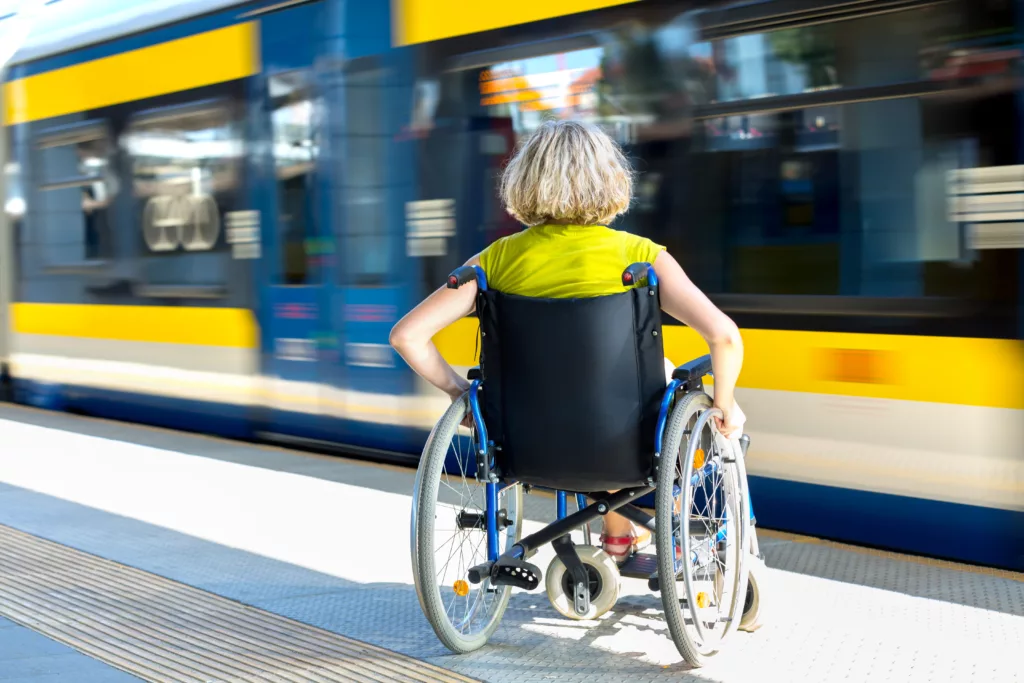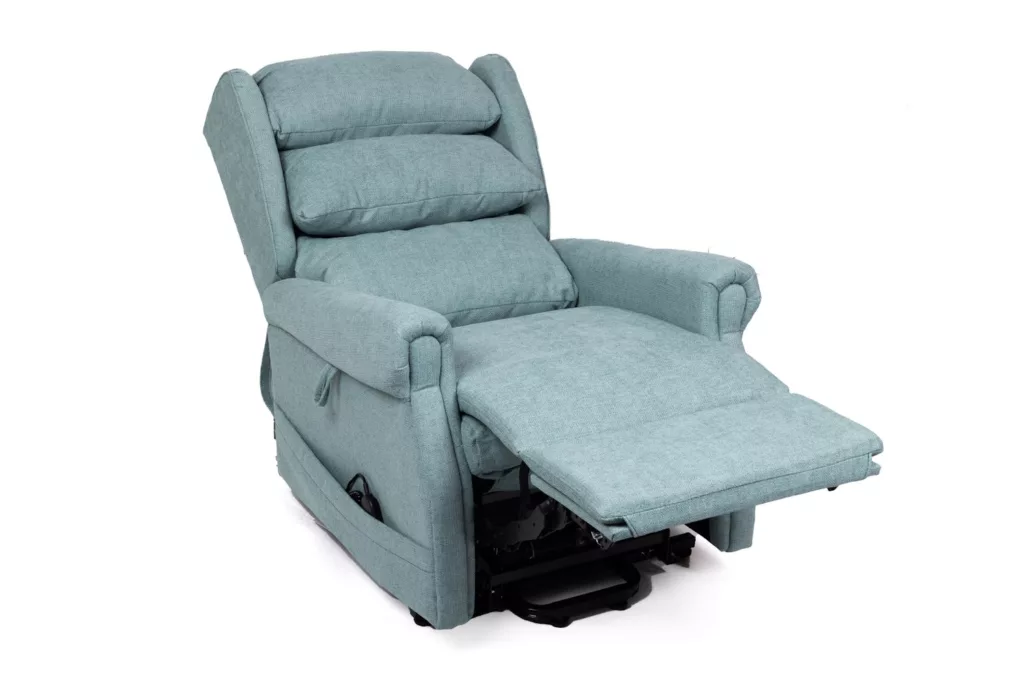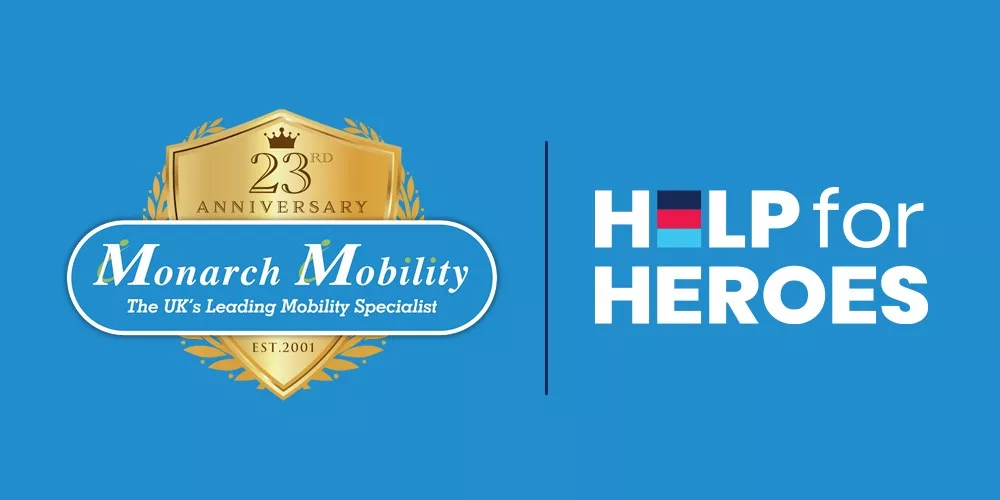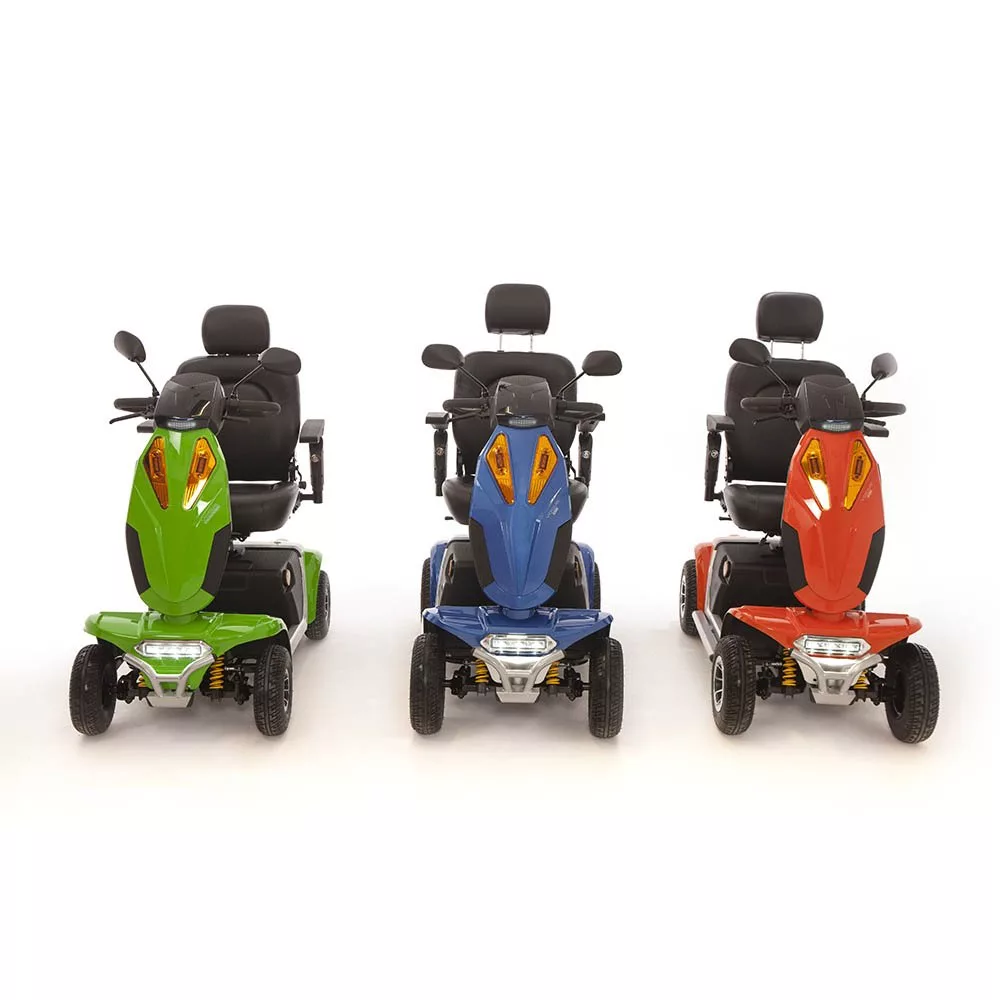Owning a mobility scooter or electric wheelchair not only makes daily travel easier but also opens up opportunities to explore beyond your local area. It means you’re not limited to staying close to home – whether you want to head to the shops, get to an appointment, or enjoy a weekend away, public transport can help you get there.
A common question when you own a mobility aid is, “Can I take my mobility scooter or wheelchair on a bus or train?” The answer, in most cases, is “yes” – especially if you have a lightweight or foldable mobility scooter or wheelchair as they are generally more widely accepted across all public transport options.
In this article, we’ll explore the legal requirements designed to support accessible travel, along with practical tips, useful advice, and helpful resources to make your journey run more smoothly.
There is no legal obligation for buses or coaches to carry a mobility scooter, so it’s important to check before you travel as each bus service provider will have its own policy.
Most Class 2 mobility Scooters (lightweight mobility scooters) are allowed on buses, but Class 3 scooters are unlikely to be allowed as they are too heavy and bulky. Find out more about Class 2 and Class 3 Mobility Scooters.
According to The Confederation of Passenger Transport UK (CPT), to allow your Class 2 mobility scooter onto a bus, it should adhere to the following:
You can read more about the requirements in this CPT leaflet.
If you meet these criteria, you must acquire a valid permit (usually free) to take with you when you travel. You will need to contact your local bus company for further information.
Buses and coaches are legally required to have features for disabled people, and standard wheelchairs must be permitted on all public buses.
A standard wheelchair is:
On a wheelchair accessible bus, the driver can only refuse to let you get on if:
If other passengers are standing in the wheelchair space, they are required to move.
Taking a wheelchair or a powerchair on a bus should be fairly straightforward. Most buses have a wheelchair ramp, which the driver will set up to help you get on and off the bus.
Mobility scooters on trains are usually allowed; however, there may be restrictions, so it’s always worth double-checking with your train provider.
Your mobility scooter should be no more than 700 mm wide and 1200 mm long, and the combined weight of the scooter and user should not exceed 300 kg.
To take a mobility scooter on a train, some providers require a permit before you can travel; the rail provider will be able to advise you further.
It’s worth remembering that even if you have checked if you can get on a train with your mobility scooter, you may not be able to board the train if it is unsafe or overcrowded. Pre-book to ensure you get a space and any assistance at the station.

Wheelchair access on trains is usually permitted as long as the wheelchair fits within the dimensions specified by government regulations (700mm wide by 1200mm long). Each train operator has different policies regarding weight, measurements, and class, though, so it is worth checking. Furthermore, older trains may not have the space to host larger wheelchairs, so again, it’s worth checking with the train provider.
There are limited spaces available to wheelchair users on each train, so it’s worth making a reservation if possible.
Accessible travel on trams and coaches tends to depend on the service provider, so it’s best to check their website or contact their customer service team for specific details.
Travelling on the underground with a mobility scooter or wheelchair can be complex due to the age of the infrastructure. Check the TfL website for information on access, boarding points, boarding ramps, and safety.
Having the freedom to enjoy days out with friends and family or run essential errands using public transport is incredibly important for those with mobility needs.
Whilst most public transport services accommodate mobility aids, it’s always a good idea to check with the service provider if you plan to take your wheelchair or mobility scooter on trains and buses. They will be able to offer further information about their regulations and the support available from their staff during your journey.
No matter how you travel, a lightweight mobility scooter or powerchair will certainly make your journey easier and more accessible. Monarch Mobility offers a wide range of lightweight and Class 2 scooters, as well as lightweight electric wheelchairs (powerchairs) – designed for convenience and ease of use.
For more information, browse the Monarch website or call our experts for specialist advice.
As we age, staying active can become more challenging due to decreased physical ability. However, maintaining an active lifestyle is essential for overall health and mobility.
Fortunately, taking part in seated workouts for seniors requires minimal preparation or equipment, making them an accessible and beneficial addition to any routine. Additionally, Monarch Mobility offers a range of solutions, including mobility scooters and wheelchairs, to support those with mobility challenges in staying independent and enjoying greater freedom.
Seated workouts, also known as sitting exercises or chair exercises, are simple and effective movements designed for individuals who find it more comfortable to exercise while seated. These exercises enhance flexibility, mobility, and overall wellbeing while being gentle on the joints.
Taking part in a chair workout for just a few minutes each day can improve strength, balance, posture, and overall mobility.
It offers a low-impact and effective way to maintain fitness without putting excessive strain on muscles or joints.
Seated exercises for the elderly are particularly beneficial for those who want to maintain or enhance their physical ability. Since healing and muscle regeneration slow with age, regular movement becomes crucial to maintaining strength, flexibility and mobility.
Chair workouts are also great for individuals recovering from surgery or illness, allowing the body to slowly strengthen and gain mobility.

One of the great advantages of seated exercise for the elderly is that they can be done anywhere there is a chair!
You don’t need any special equipment, just a stable chair without wheels. You can practice exercises at home, in the garden, or at a local community centre. You can also learn the exercises from a printout, a video, or an instructor – whichever method you find best.
No matter how you incorporate the exercises, they can improve your mobility and help prevent falls, so are a beneficial addition to your daily routine.
No, you don’t need any prior fitness to start chair-based exercises for the elderly.
While exercising sometimes feels like it requires a lot of physical effort, seated exercises for seniors are low-impact yet still promote movement and strength.
Seated exercises for elderly individuals can be adapted to suit different fitness and mobility levels. You can modify movements, add weights for extra resistance, or stick to gentle motions – whatever works best for you and your body.

Whether you are looking to regain mobility, recover from an injury, or simply stay active, there are various seated workouts for seniors that you can do, which will focus on different parts of your body.
Seated exercises for the upper body help maintain muscle strength for daily activities like lifting groceries and dressing. They also promote bone health and flexibility, reducing the risk of falls and injuries.
Exercises for the elderly to strengthen legs can significantly enhance mobility, stability, and independence. Strong leg muscles support activities such as standing, walking, and climbing stairs while helping to maintain bone density and promoting better circulation.
Chair-based knee exercises can help strengthen surrounding muscles, improving balance, flexibility and stability. They also alleviate stiffness and joint pain during daily activities like walking, climbing stairs, and getting in and out of chairs, mobility scooters or wheelchairs.
Ankle exercises for the elderly help reduce joint stiffness and enhance circulation and overall foot mobility. They can significantly improve balance and stability, which is crucial for preventing falls.
Seated exercises for the torso aid in maintaining posture, balance, and core strength. A strong core helps prevent falls and makes everyday tasks, like getting up from a chair, easier.
If you are recovering from surgery or have a medical condition, consult your doctor before starting any new exercise routine.
By incorporating sitting exercises for seniors into your daily routine, you can improve strength, flexibility, and overall wellbeing – all from the comfort and safety of your chair!
Here are some excellent resources for seated workouts for seniors:
Seated workouts for seniors are a great way of keeping your body mobile, flexible and strong.
As we age, the right support can enhance our mobility and independence – whether that’s making your home accessible or finding the perfect mobility scooter, rise and recliner chair, walker, or wheelchair. Whatever your mobility needs, speak to our expert team to help you find the perfect solution for you.

There is always a risk of injury when engaging in any physical activity. Choosing to participate in a chair workout should be done with caution and at your own risk.
Monarch Mobility accepts no liability for injuries sustained during any exercises undertaken.
Always consult a doctor before starting any new routine, particularly if you have recently undergone surgery, experience chronic pain, or have trouble maintaining proper posture.
Listen to your body and progress gradually. If you experience sharp pain, dizziness, nausea, or trouble breathing, stop the exercise immediately and consult a medical professional.
Monarch Mobility is delighted to announce an exciting new partnership with Help for Heroes, the UK’s leading veterans charity.
Monarch is passionate about supporting those who have dedicated their lives to serving in the military. As such, we are proud to donate a percentage of our retail sales to Help for Heroes, a charity that provides essential assistance to wounded veterans and their families. In addition to our charitable contribution, we are offering an exclusive discount to both veterans and active military personnel, helping them to access the mobility solutions they need.
Help for Heroes is dedicated to supporting the Armed Forces community, helping veterans with their physical and mental health, welfare, and social needs. They provide assistance to all military personnel, regardless of when or where they served – or for how long.
The charity also offers a vital lifeline to families, providing practical advice and guidance on matters ranging from finance to counselling.

Monarch is making a meaningful impact, not only through financial support for the charity but also by ensuring that those who have served in the military can access high-quality mobility solutions at an affordable price.
As one of the UK’s leading specialist mobility scooter companies, Monarch recognises the essential role that mobility scooters and electric wheelchairs play in helping individuals regain their freedom and independence. Through both our charitable contributions and exclusive discounts for veterans and active military personnel, we are committed to supporting those who have sacrificed so much.
“We’re incredibly proud to partner with Help for Heroes,” said Martin Sampson, Managing Director of Monarch Mobility. “Supporting this fantastic charity aligns perfectly with our organisation and our vision. We want to give back to those who have served in the military and show our gratitude in a meaningful way.”

In honour of our partnership with Help for Heroes, Monarch Mobility will be donating 1% of all retail sales to the charity, up to a total of £10,000.
Additionally, we are offering a discount of £100 on our range of scooters and powerchairs to veterans and active military personnel*.
With 25 years of experience and expertise, Monarch Mobility is committed to matching customers with the best mobility solutions for their needs.
For more information, contact the sales team or call 0800 002 9633.
Will you be joining us at the Motability Harrogate event on the 1st and 2nd of August?